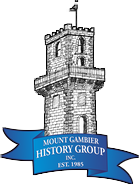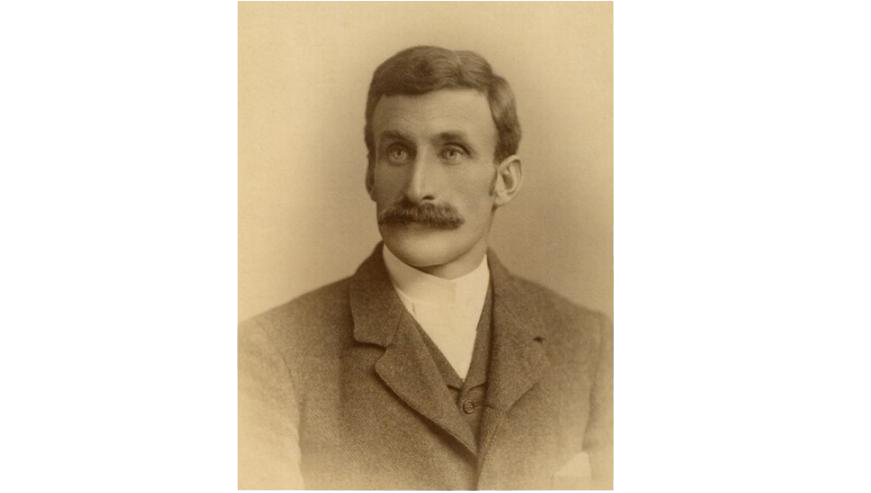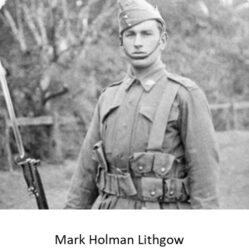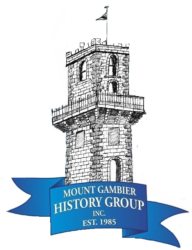Lawrence Allen “Larry” Wells (30th April 1860 – 11th May 1938) was born at Yallum Stationnear Penola and was the son of squatter Thomas Allen Wells and his wife Isabella Elizabeth (née Kelsh). He grew up the Mount Gambier district and he moved with his family to Yahl, where his father took up potato growing. In the mid 1870’s he played cricket in Mount Gambier for the “Dreadnoughts” and then went on to play for the “All-Comers” in the early 1880’s.
He was considered the last of the Australian explorers of note and received an O.B.E. in recognition of his contributions to the knowledge of the vast interior, yet a name that many Australians have never even heard.
In 1883 he was an assistant surveyor on the “Queensland, Northern Territory and South Australian Border Survey”. This expedition presented extreme difficulties and hardships. The party traversed 650 miles of barren country, sand hills, swamps and heavy forest. It was three years before the expedition reached the northern coast and Mr Wells was the only man to remain with the expedition throughout. In spite of this gruelling expedition, three weeks after his return he was again sent to the far north on triangulation work surveying pastoral boundaries..
In 1891 Larry Wells was appointed second in command of the “Elder Scientific Exploring Expedition” which covered much unknown country west of central Australia and was under the leadership of David Lindsay. Their instructions were to investigate the remaining blanks on the map of Australia. The expedition suffered hardships and personnel problems, which saw Lindsay return to Adelaide to explain. This left Larry Wells in charge of the remnants of the expedition. Wells was responsible for the discovery of several lakes and hills in West Australia and was the first to report the existence of gold in the East Murchison district. The expedition was disbanded in March 1892. Returning to the Survey Dept., Wells married Alice Marion Woods on September 22nd 1892.
In 1896 Albert Calvert, a London mining engineer, offered to finance an expedition to complete the task of the Elder venture.Larry Wells was given command of the ill-fated “Calvert Scientific Exploring Expedition” which was formed to explore the last unknown area of the continent, mainly in the Great Sandy Desert. Their task was to traverse 850 miles through some of the most inhospitable country in the world. Other tasks included, the collectionof scientific specimens, finding evidence of the fate of the lost Leichardt expedition of 1848 and opening a stock route between Northern Territory and Western Australian goldfields.
(Photo – L to R – A.T. Magarey, L.A. Wells, G.L. Jones, C.F. Wells & G.A. Keartland. Taken 1896)
The second in command of the party of seven was Larry Well’s cousin Charles F. Wells. Against the leaders wish, his cousin Charles and another member, G.L. Jones left the main party to make a side journey towards the north-west, intending to join the others later. They were not seen alive again.
At one stage of the journey 65 sandhills, each 100 feet high (30.5 m) were crossed in eight miles. After suffering tremendous privations, the lack of water, desert sand hills and the glare from the white flowers of the spinifex, which made their eyes so painful they could not sleep. With the camels dying for want of water and the party walking by night and resting by day they finally reached the Fitzroy River. Their joy was tremendous but overshadowed by anxiety for the missing party members.
17 days after their return Larry Wells took it upon himself to organise a search party in an attempt to find the missing men. The party consisted of a police trooper, an aboriginal tracker and himself, and equipped with four pack horses. After five search expeditions their mummified bodies were eventually found on 27th May 1897. Jones Diary found with his body, indicated that they had died from extreme heat and lack of water on about 21st November 1896.
At the time, station managers on the fringe of this country claimed it was a miracle that the party got through and that it was entirely due to the skill and determination of one man. Larry Wells.
In August 1897 Wells transferred to the Pastoral Board but from March to September 1903 led the “Government North-West Prospecting Expedition”, after which he returned to the Surveyor General’s Office and spent three years on a trigonometric survey in the north-west of the Northern Territory.
1909 to 1930 he held various administrative positions for the State and Federal public services.
At 70 years of age he pulled on his explorer’s boots again to lead the privately-organized “Quest (1930), Endeavour (1932) and Tarcoola (1933) Expeditions”. In 1935 he received the Jubilee Medal and in 1937 was appointed O.B.E.
Lawrence Wells died after being struck by a railcar near Blackwood railway station on 11th May 1938 and was buried at Mitcham Cemetery.




